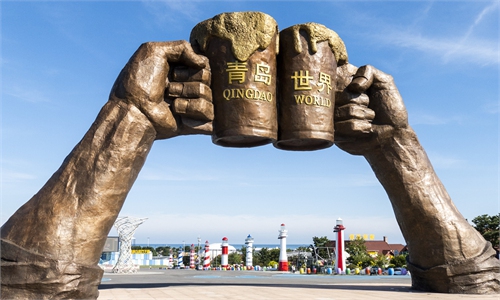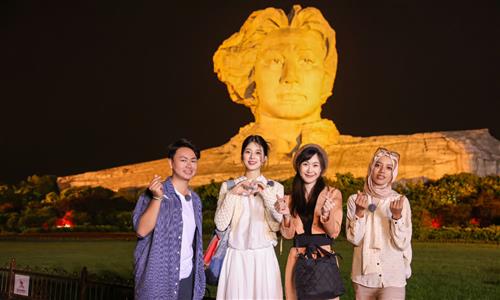ARTS / CULTURE & LEISURE
Nine departments issue guideline to better inbound tourist services
Public services ‘determining factor’ in tourism growth

Foreign tourists enjoy the scenery on a bamboo raft on Yulong River in Yangshuo county, Southwest China's Guangxi Zhuang Autonomous Region, on July 15, 2023. Photo: VCG
Making payment methods easier for inbound tourists in China is just one of the many measures stressed in the guidelines recently published by nine Chinese central government departments, including the Ministry of Culture and Tourism.The regulations provide directions for promoting the country's high-quality development of public tourist services, which are part of the robust "tourism public service system" that has been set as a goal to be achieved in three to five years.
Cultural policy expert Dou Saiming told the Global Times that establishing a high-quality system involves different "gears" such as public transportation, tourism facilities and sites and safety that "match up and work together."
"This is the reason why the agenda needs to involve different departments. The quality of public tourist services is a determining factor in the country's tourism growth," Dou remarked. So far, government agencies such as the Ministry of Culture and Tourism and the ministries of Transport, Emergency Management, Finance, Natural Resources have taken part in the initiative.
Due to measures like the 144-hour visa-free transit policy, China's inbound tourism industry is witnessing a boom. During the first half of 2024, around 8.5 million foreign travelers entered the country visa-free. Currently, the number of ports that have adopted the 144-hour visa-free transit policy has increased to 37.
"Enhancing public services for inbound tourism" is also a highlight of the regulations. Measures such as encouraging key tourism cities to provide foreign travelers with online consulting services, popularizing guides in foreign languages and installing multi-language reservation platforms were introduced.
Located in Zhangjiajie, Hunan Province, the Wulingyuan scenic spot has proven popular among visitors from countries such as South Korea and the US. Signs at the Wulingyuan site have been translated into English, Russian and Korean. To better cater to visitors who speak other foreign languages, a total of 112 youth volunteers versed in these languages are working as tour guides in the scenic area during the summer holiday season.
While noting Zhangjiajie is now "a window showing the international nature of Chinese natural scenic spots," Xue Linkai, a marketing expert in the tourism industry, told the Global Times that such multi-language services can also help international visitors enjoy "deeper cultural experiences in China."
The regulations also stressed the importance of helping foreigners adapt to China's "all-digital" payment lifestyle and making their payment experiences easier and smoother by launching creative programs.
In April, managers of Mount Huangshan in East China's Anhui Province launched an online program that included a "red envelope code" designed to allow international visitors to pay with credit cards from international banks while also gaining coupons for use at the scenic spot. Collaborating with Alipay, the program also comes with a translation function, providing guides to the spot in 16 languages.
"The country's technological innovation makes the tourism industry more humane and barrier-less to people regardless of their culture," Dou noted. He said that smart designs are also helping disabled people at many of China's cultural and natural tourism sites.
In addition to improving the hospitality for inbound tourists, the regulation encourages improving support facilities at cultural venues like museums, public libraries and intangible cultural heritage venues across the country. Meanwhile, it also calls for better "integration" of public tourist services by incorporating art performances, reading corners and others into travel service centers.
"These guidelines are dedicated to boosting tourism in the country. They also push for a good transformation of the country's tourism traditions," Xue remarked.



